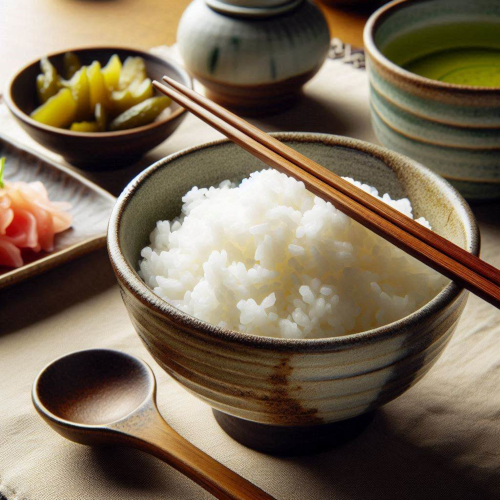Rice, a staple food for more than half of the world’s population, is more than just a versatile gluten free kitchen ingredient. It’s a powerhouse of nutrients that offers a range of health benefits. Whether you’re a fan of white, brown, basmati, jasmine, or wild rice, this humble grain can be a valuable addition to your diet. Let’s explore why making rice is great for your health.
1. Rich in Energy
Rice is a primary source of carbohydrates, which are essential for energy. The body breaks down carbohydrates into glucose, which fuels our brain, muscles, and other tissues. If you lead an active lifestyle or need a quick energy boost, rice can be an excellent dietary choice. White rice, in particular, is easy to digest, providing a rapid energy source, while brown and wild rice offer a slower release of energy due to their higher fiber content.
2. Gluten-Free and Easy to Digest
For those with gluten intolerance or celiac disease, rice is a safe and nutritious option. It’s naturally gluten-free, making it an excellent alternative to wheat-based products. Additionally, rice is gentle on the digestive system, making it suitable for people with sensitive stomachs or those recovering from illnesses. White rice, which is less fibrous, is especially recommended when one needs a light meal that is easy on the stomach.
3. Rich in Vitamins and Minerals
Rice, particularly brown and wild varieties, is packed with essential vitamins and minerals. Brown rice retains its bran and germ, which are removed in white rice, making it richer in nutrients like B vitamins (thiamine, niacin, riboflavin), magnesium, phosphorus, and manganese. These nutrients play a critical role in various bodily functions, including metabolism, bone health, and immune function.
4. High in Fiber
Brown, red, black, and wild rice are rich in dietary fiber, which promotes digestive health by aiding regular bowel movements and preventing constipation. A high-fiber diet can also help lower cholesterol levels, control blood sugar levels, and assist in weight management by promoting a feeling of fullness.
Ingredients:
- 1 cup of rice (white, brown, jasmine, basmati, etc.)
- 2 cups of water (adjust depending on the type of rice)
- A pinch of salt (optional)
- 1 tablespoon of oil or butter (optional)
Equipment:
- A medium-sized saucepan with a tight-fitting lid
- Measuring cups
- Strainer or colander (optional)
- Spoon or fork for fluffing

Instructions:
- Measure the Rice:
- Measure 1 cup of rice using a measuring cup. Adjust the amount of rice based on how many servings you need, but keep the ratio of rice to water consistent (1:2 for most rice types).
- Rinse the Rice (Optional but Recommended):
- Rinse the rice under cold water using a strainer or colander. This step helps remove excess starch, which can make the rice sticky, and any dust or debris.
- Swirl the rice gently with your hand while rinsing, and continue until the water runs mostly clear.
- Add Rice and Water to the Pot:
- Place the rinsed rice into a medium-sized saucepan. Add 2 cups of water (or the appropriate amount for your rice type). You can also add a pinch of salt for flavor and a tablespoon of oil or butter to prevent sticking.
- Bring to a Boil:
- Place the saucepan on the stove over medium-high heat. Allow the water to come to a rolling boil. Do not cover the pot at this stage, and keep an eye on it to prevent the water from boiling over.
- Reduce Heat and Simmer:
- Once the water is boiling, reduce the heat to low. Cover the pot with a tight-fitting lid to trap the steam. This step is crucial to prevent the rice from becoming mushy or unevenly cooked.
- Cook the Rice:
- Let the rice simmer on low heat for about 18-20 minutes for white rice. For brown rice, this can take about 40-45 minutes. Avoid lifting the lid or stirring the rice during this time, as this can release steam and affect the cooking process.
- Turn Off the Heat and Let Sit:
- After the cooking time is up, turn off the heat but keep the lid on. Let the rice sit for another 5-10 minutes. This resting period allows the rice to finish cooking with the residual steam, making it fluffy.
- Fluff and Serve:
- Remove the lid and gently fluff the rice with a fork or spoon. Be careful not to mash the grains. Your rice should be perfectly cooked and ready to serve.
- Clean Up:
- To avoid mess, wipe down any splashes immediately and let the pot cool before cleaning. If any rice has stuck to the bottom, soak the pot in warm soapy water for easy cleaning.
Tips for a No-Mess Experience:
- Use the Right Pot Size: Make sure your pot is big enough to accommodate the rice and water without overflowing.
- Control the Heat: Keeping the heat low during simmering helps prevent water from boiling over.
- Don’t Peek: Lifting the lid releases steam and can result in uneven cooking.
By following these steps, you can make delicious rice without the mess! Enjoy your perfectly cooked, fluffy rice with your favorite dishes.



0 Comments